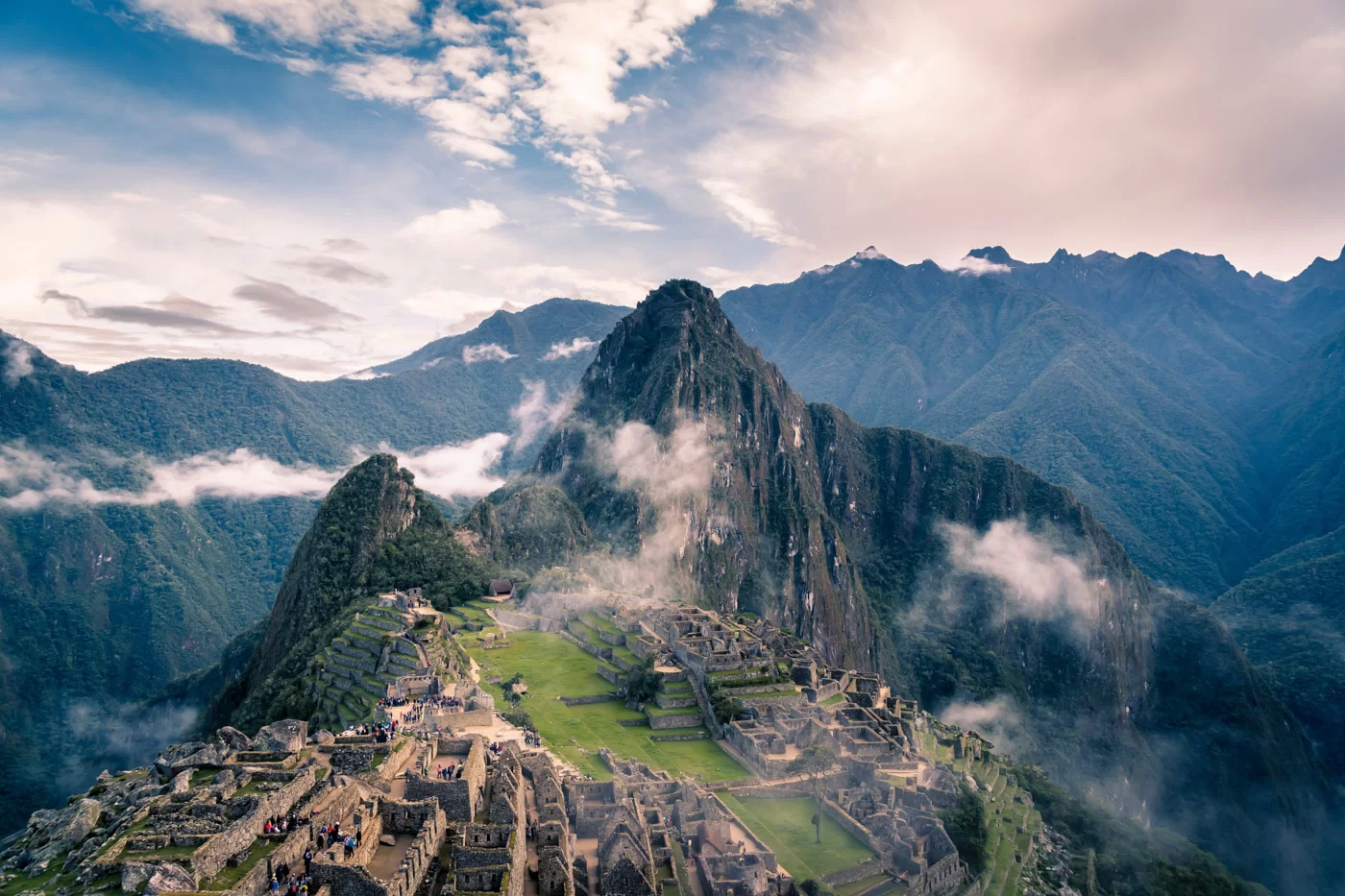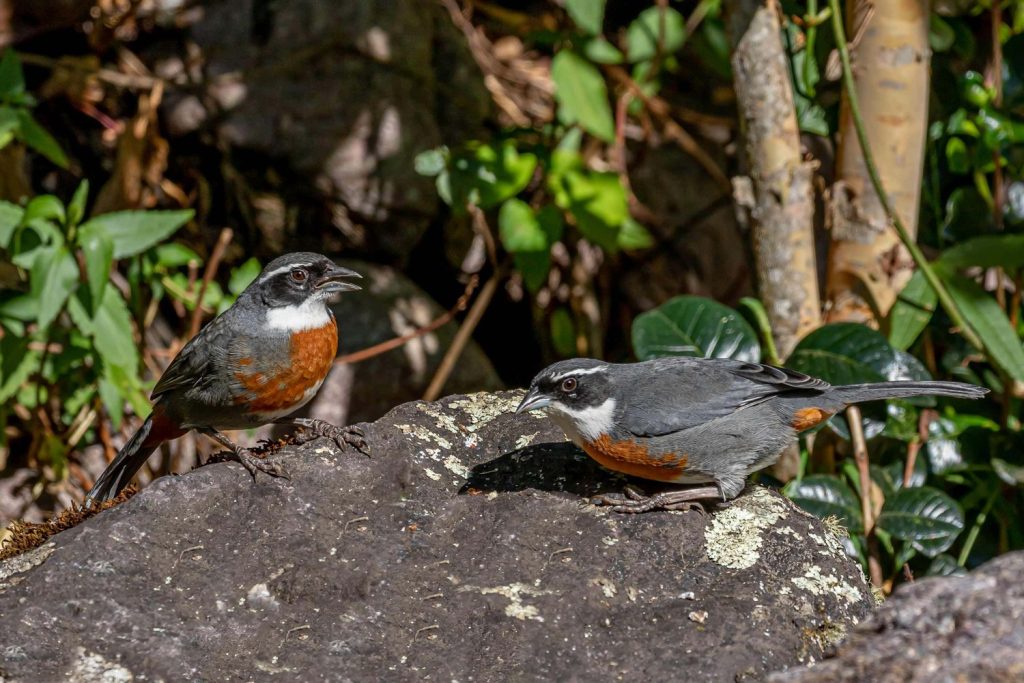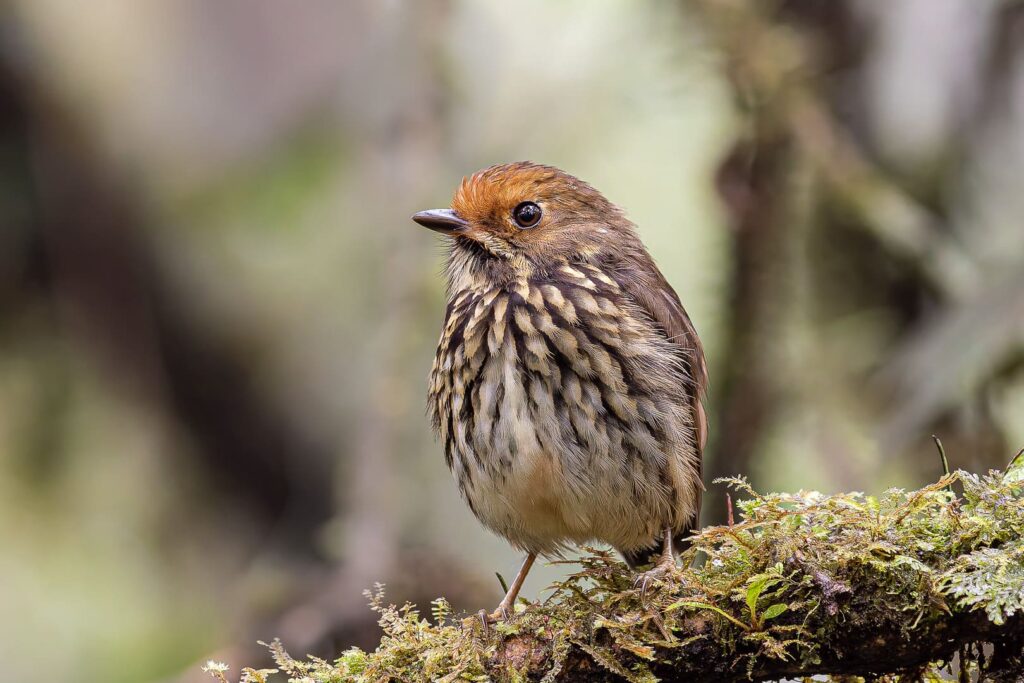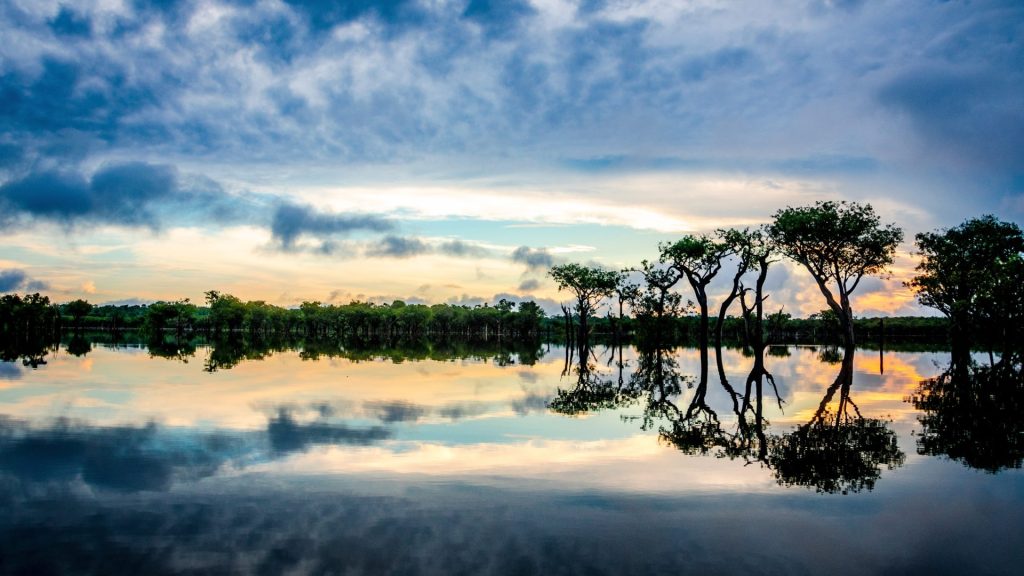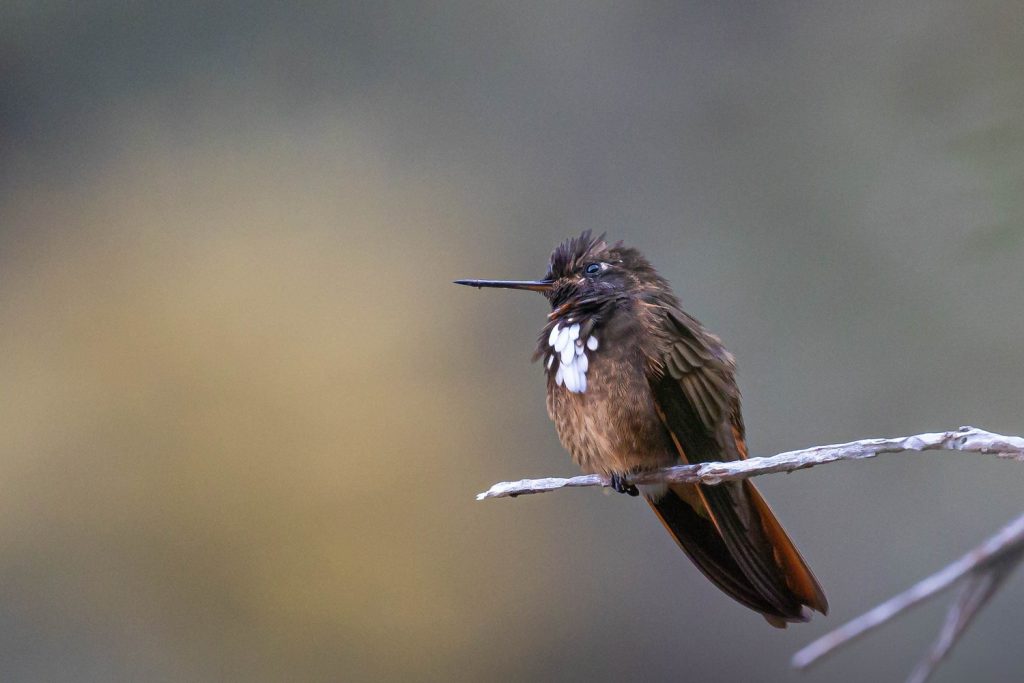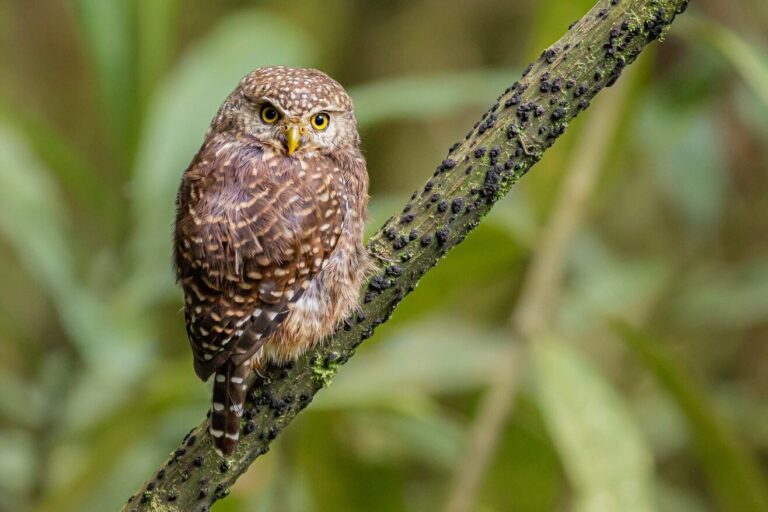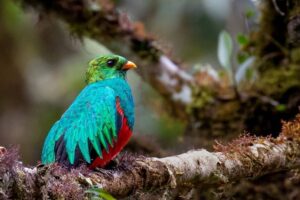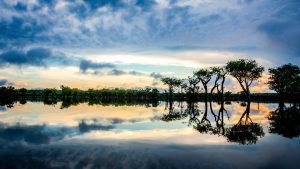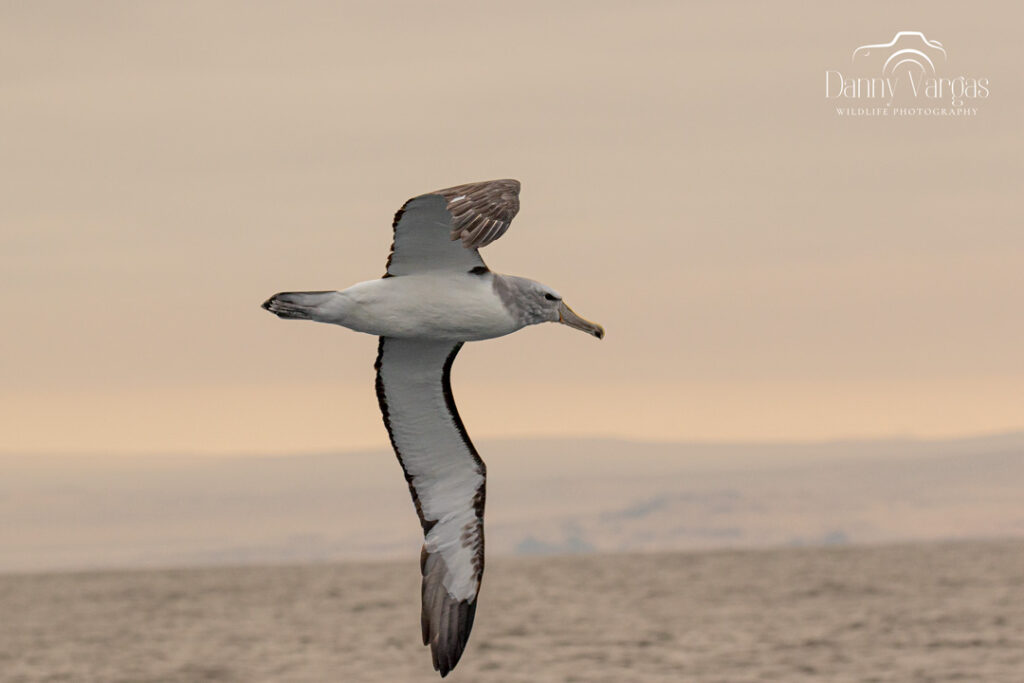MANU ROAD BIRDING TOUR
- From
- USD 1850
- Trip Type
- Activities
- Trip Duration
- Group Size
- Habitats Covered
The price listed above is based on a minimum of 4 people in double occupancy. If you have any questions please refer to FAQ of send us a message.
- Trip Outline
- Itinerary
- Trip Includes
- Gallery
- FAQ
Trip Outline
The Ultimate Manu Road Birding Tour — From the Andes to the Amazon
One of the world’s most legendary birding routes—Manu Road, a place where dramatic landscapes and unmatched biodiversity converge. This tour takes you from the high Andean grasslands through elfin and cloud forests all the way to the lush Amazonian foothills, delivering a birding experience like no other.
🌿 Birding in Manu Road: A Biodiversity Hotspot on a Global Scale
Manu Road is often considered one of the most productive birding routes on Earth. The tour follows a stunning altitudinal gradient that allows access to a rich variety of habitats, each with its own set of specialties and endemics. This trip is ideal for passionate birders looking for a route that combines scenery, wildlife, and ease of access.
Whether you’re chasing lifers or soaking in the jungle atmosphere, this Manu Road Birding Tour offers an unbeatable diversity of species and landscapes—making it one of the best birding trips in Peru.
🦜 Target Endemics and Highlights
From cloud forests to bamboo thickets and humid lowlands, the route features spectacular species such as:
Rusty-fronted Canastero (E), Creamy-crested Spinetail (E), Chestnut-breasted Mountain-Finch (E), Puna Tapaculo, Scribble-tailed Canastero, White-throated Screech-Owl, Urubamba Antpitta (E), Red-and-white Antpitta (E), Gray-breasted Mountain-Toucan, Andean Cock-of-the-rock, Peruvian Piedtail (E), Cerulean-capped Manakin (E), Yungas Manakin, Blue-moustached Barbet, Stripe-chested Antwren, White-crowned Tapaculo, Black-backed Tody-Tyrant (E), Fine-barred Piculet, Scarlet-hooded Barbet, Amazonian Antpitta, Hoatzin, Rufous-headed Woodpecker, Manu Antbird, and many more.
🗺️ Tour Route: Manu Road’s Birding Habitats
-
High Andes and Cusco Highlands – Highland endemics like Creamy-crested Spinetail, Bearded Mountaneer, Chestnut-breasted Mountain-Finch
-
Elfin Forest and the Entrance to Manu – Red-and-white Antpitta, Puna Thistletail, Gray-breasted Mountain-Toucan
-
Cloud Forest – Mixed flocks and the spectacular Andean Cock-of-the-rock lek, Cereulean-capped Manakin, Blue-moustached Barbet.
-
Foothill Bamboo and Wetlands – Manu Antbird, Rufous-headed Woodpecker, Scarlet-hooded Barbet, Hoatzin, Amazonian Antpitta, Black-backed Tody-Tyrant.
This well-paced journey allows you to explore all major habitats of the eastern Andes and upper Amazon basin without rushing. Each elevation zone adds a new layer of diversity and discovery.
🚐 Comfort, Quality, and Expert Guidance
You’ll travel in private transportation, stay in charming birding lodges and be guided by top-level birding experts. Accommodations include lodges ensuring both comfort and immersion in nature.
🎯 Affordable and Accessible Birding Adventure
This tour is one of the best values in South America for the sheer diversity of species, scenery, and experience. It’s ideal for hardcore listers, intermediate birders, and novices alike.
| MANU ROAD BIRDING TOUR – 7 days | LODGING | |
| 1 | Cusco – Upper Manu Road | Wayquecha Lodge |
| 2 | Cloud forest – Manu Road | Cock of the Rock Lodge |
| 3 | Cloud forest – Manu Road | Cock of the Rock Lodge |
| 4 | Foothills | Manu Biolodge |
| 5 | Foothills + Bamboo patches | Manu Biolodge |
| 6 | Back to the mountains + missing species | Wayquecha Lodge |
| 7 | Back to Cusco + OUT | – |
Itinerary
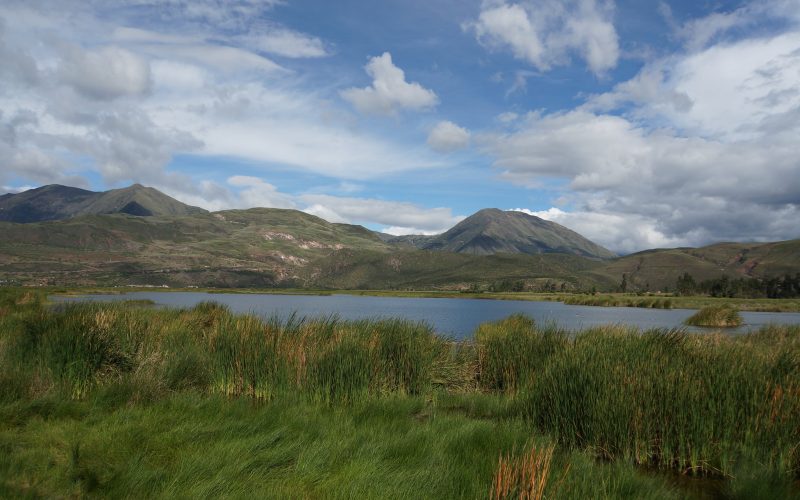
Birding the Puna and Elfin Forest: Bearded Mountaineer
Our journey begins early in the morning in Cusco, the ancient capital of the Inca Empire. We head first to Huacarpay, a Ramsar-designated wetland that hosts a rich mix of local and migratory birds. Target species include Yellow-billed Pintail, Puna Teal, Plumbeous Rail, Andean Duck, Andean Tinamou, White-tufted Grebe, Many-colored Rush-Tyrant, and Wren-like Rush-Bird. The surrounding flora, especially nicotiana flowers, attract hummingbirds like Black-throated Flowerpiercer, Black-tailed Trainbearer, Giant Hummingbird, and the stunning endemic Bearded Mountaineer (E).
In the drier xerophytic habitat, we’ll search for Rusty-fronted Canastero (E), Streak-fronted Thornbird, Puna Tinamou, and the elusive Darwin’s Nothura. As we climb higher through puna grasslands, expect Slender-billed Miner, Peruvian Sierra-Finch, Andean Flicker, and Variable Hawk.
At midday, we reach the Acjanaco Pass — the beggining of our Manu Road Birding Tour. Here, we enjoy a picnic lunch before entering the pristine Elfin forest, a unique habitat teeming with endemics. Our targets include Puna Thistletail, Puna Tapaculo, Diademed Tapaculo, Moustached Flowerpiercer, Scribble-tailed Canastero, and Gray-breasted Mountain-Tanager.
Mixed flocks often include spectacular species like Scarlet-bellied Mountain-Tanager, Hooded Mountain-Tanager, Golden-collared Tanager, Grass-green Tanager, Pearled Treerunner, Yungas Pygmy-Owl, and Grass Wren.
Night at Wayquecha Lodge
Birding the Elfin Forest at Wayqecha: Endemic Antpittas
Wayqecha Biological Station, perched at 3,000 meters in the upper reaches of Manu Road, sits in the heart of the Elfin forest—a cold, humid, and mysterious ecosystem perpetually blanketed in clouds. This rarely studied habitat is not only rich in birdlife but also harbors diverse orchids and unique plant species.
The lodge gardens attract brilliant hummingbirds like Long-tailed Sylph, Scaled Metaltail, Tyrian Metaltail, Shining Sunbeam, and the endemic “Cuzco” Starfrontlet (E)—a localized split from the Violet-fronted Starfrontlet.
On the trails, target species include Urubamba Antpitta (E), Red-and-white Antpitta (E), Marcapata Spinetail (E), Hooded Tinamou, Stripe-faced Woodquail, Semi-collared Hawk, Black-and-chestnut Eagle, Sword-billed Hummingbird, Masked Trogon, Crimson-mantled Woodpecker, Puna Thistletail, Band-tailed Fruiteater, Rufous-backed Treehunter, Leymebamba Antpitta (E), Trilling Tapaculo, White-throated Tyrannulet, and White-banded Tyrannulet.
This area is also home to elusive mammals like the Spectacled Bear and Culpeo (Andean Fox).
Night at Cock-of-the-Rock Lodge
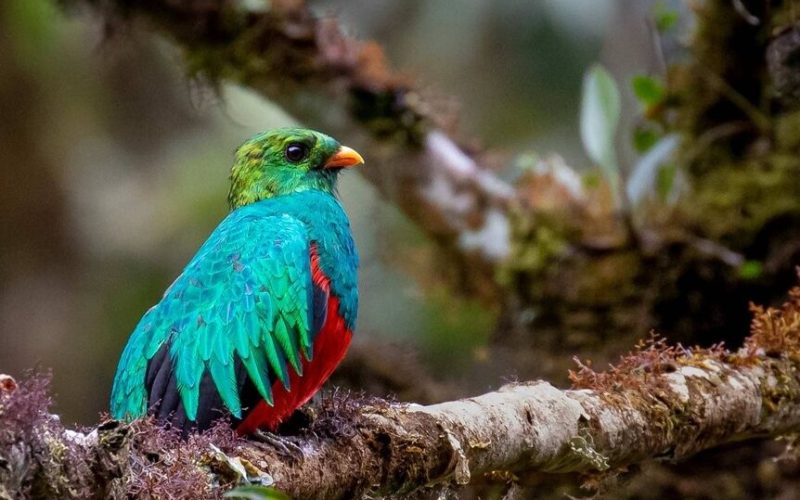
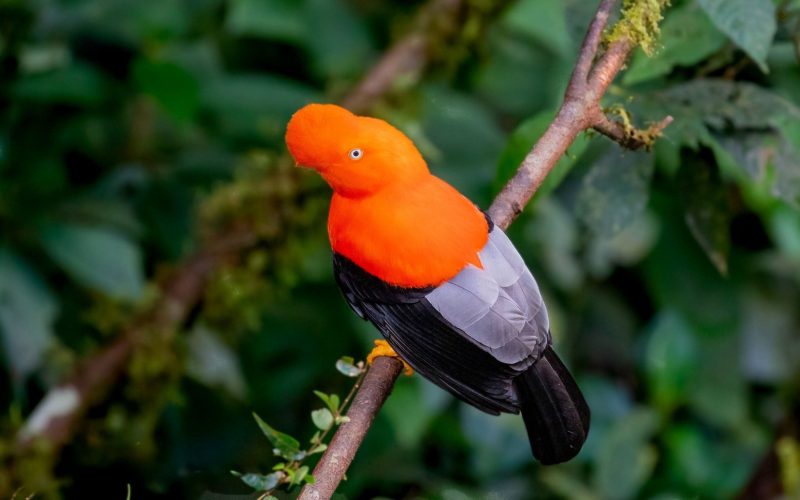
Birding Cloud Forest: Andean Cock-of-the-Rock Lek
Located at 1,500 meters elevation in the midsection of Manu Road, San Pedro offers one of the most iconic wildlife displays in South America—the vibrant Andean Cock-of-the-Rock lek. From a strategically placed platform, visitors enjoy a close-up, eye-level view of the dazzling males performing their courtship dance to attract females—an unforgettable spectacle.
But the show doesn’t end there. This stretch of cloud forest is bursting with birdlife and mammals. Among the avian highlights are Brown Tinamou, Rufous-breasted Woodquail, Rufescent Screech-Owl, Buff-thighed Puffleg, Rufous-booted Racket-tail (E), Peruvian Piedtail (E), Violet-fronted Brilliant, Speckled Hummingbird, Blue-banded Toucanet, Highland Motmot, Blue-moustached Barbet, White-backed Fire-eye, Stripe-chested Antwren, White-crowned Tapaculo, Maroon-belted Chat-Tyrant, Fulvous-breasted Flatbill, Cinnamon-faced Tyrannulet, Crested Quetzal, Scale-crested Pygmy-Tyrant, Yellow-rumped Antwren, Yellow-breasted Warbling Antbird, Yungas Manakin, Cerulean-capped Manakin, Inca Jay, White-capped Dipper, Andean Solitaire, Olive Finch, Two-banded Warbler, Carmiol’s Tanager, and Russet-backed Oropendola—along with a brilliant variety of colorful Tanagers.
San Pedro is also notable for its primate diversity. A small, isolated population of the endangered Andean Woolly Monkey lives here, along with Shock-headed Capuchins.
Night at Cock-of-the-Rock Lodge
Manu Biolodge Birding: Endemics, Bamboo Trails, and Foothills
We will arrive in the afternoon to Manu Biolodge, formerly known as Villa Carmen. Now one of the most important biological stations in the region, this 3,000-hectare reserve sits at 500 meters above sea level, in the lush foothills of our Birding in Manu Road.
We’ll spend two full days birding across the lodge’s diverse habitats. Bamboo patches host key specialties such as Rufous-headed Woodpecker, Manu Antbird, Rufous-vented Ground-Cuckoo, White-lined Antbird, White-cheeked Tody-Flycatcher, and Bamboo Foliage-Gleaner. Trails allow access to other range-restricted species like Fine-barred Piculet, Scarlet-hooded Barbet, Foothill Antwren, Brownish-headed Antbird, and Cabanis’s Spinetail.
Additional highlights along the trail include White Hawk, Military Macaw, Blue-headed Macaw, Great Potoo, Lanceolated Monklet, Rufous-capped Nunlet, Yellow-billed Nunbird, Chestnut-backed Antshrike, Yellow-breasted Warbling-Antbird, Blackish Antbird, Ornate Flycatcher, Mottle-backed Elaenia, Fiery-capped Manakin, and Band-tailed Manakin.
Aquatic environments around the lodge are home to Hoatzin, Gray-cowled Wood-Rail, Riparian Antbird, Ladder-tailed Nightjar, Pale-eyed Blackbird, and Black-billed Seed-Finch.
In the garden, hummingbird feeders attract White-necked Jacobin, Rufous-breasted Hermit, Black-throated Mango, Rufous-crested Coquette, Koepcke’s Hermit (E), and sometimes Amazonian Antpitta, Rufous-sided Crake, and even King Vulture.
Mammal encounters may include Night Monkey (Aotus sp.), Urubamba Titi Monkey, and Spider Monkey.
Nights are also productive, often featuring Black-banded Owl, Striped Owl, Common Potoo, and Tropical Screech-Owl near the lodge grounds.
Nights at Manu Biolodge (formerly Villa Carmen).
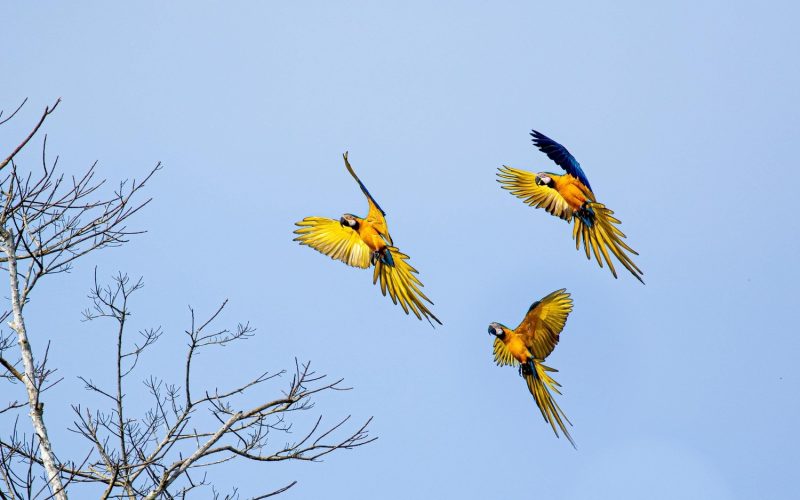
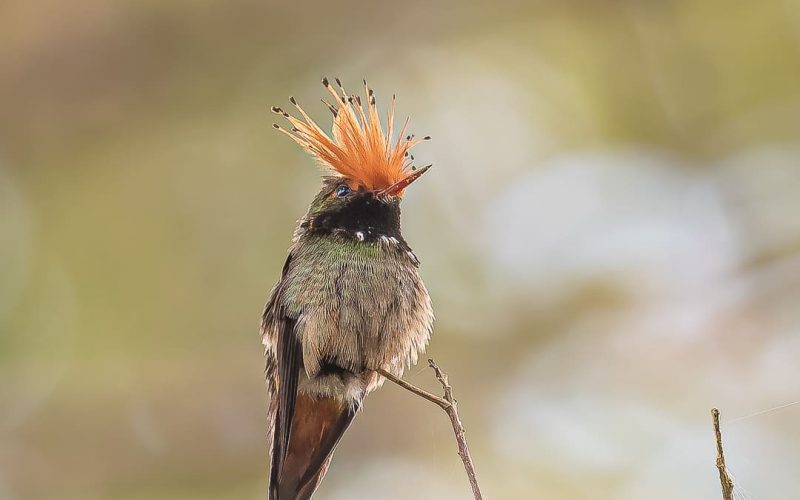
Back to the Highlands: Black-backed Tody-Flycatcher & Cereulean-capped Manakin
We will spend our final morning birding around Manu Biolodge (Villa Carmen), where species such as Black-capped, Little, and Undulated Tinamou, as well as the elusive Amazonian Antpitta, regularly visit the feeders near the lodge. Other highlights include White Hawk, Blue-headed and Military Macaw, Rufous-capped Nunlet, White-lined and Sooty Antbird, Bamboo Antshrike, Foothill Antwren, Johanne’s Tody-Flycatcher, Mottle-backed Elaenia, Black-backed Tody-Flycatcher (E), Rusty-belted Tapaculo, and Cuzco Warbler, among many others.
Later, we begin our return journey toward the highlands, making strategic stops along the road for key species we may have missed or wish to see better. These include Urubamba Antpitta (E), Cerulean-capped Manakin (E), Yungas Manakin, Crimson-crested Woodpecker, White-backed Fire-eye, Slaty Gnateater, Buff-tailed Sicklebill, Inca Flycatcher (E), Ochraceous-breasted Flycatcher, Black-throated Tody-Tyrant, Golden-headed and Crested Quetzal, and White-collared Jay.
Overnight at Wayquecha Lodge.
Last Day on Manu Road and Transfer to Cusco
After an early breakfast and a final morning of birding on the trails, we will begin our journey back up the Andes toward Cusco. Along the way, we’ll make targeted stops to look for highland specialties we may have missed earlier in the trip.
Key targets include Superciliaried (Urubamba) Hemispingus (E), Pale-legged Warbler, Black-faced Brush-Finch, Dusky-green Oropendola, and Mountain Cacique.
We aim to arrive in Cusco by mid-afternoon. You will then be transferred to your hotel or the airport, depending on your travel plans.
END OF SERVICES
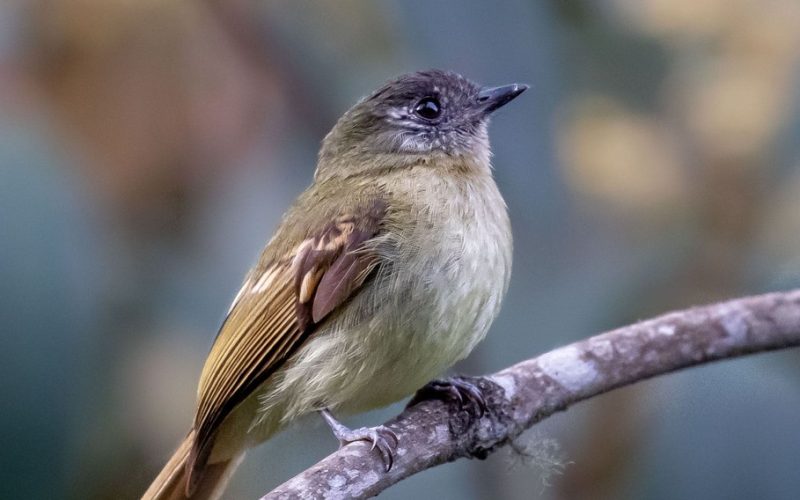
Trip Includes
Includes
Does not include
FAQ
Frequently Asked Questions
🧳 1. Are transfers and airport pickups included?
✅ Yes, all airport pickups, drop-offs, and land transfers are included:
-
Arrival and departure transfers in Cusco
-
All transport between birding sites and lodges
-
Train tickets to/from Machu Picchu
You don’t need to worry about transportation logistics — we handle it all for you.
🐾 2. What’s the longest walk during the tour?
The longest walks are during forest birding on Manu Road, lasting up to 3–4 hours at a slow birding pace. Our car will be close in most hikes in case of rain or fatigue.
Trails may be muddy, rocky, or include gentle slopes and stairs.
👟 We recommend waterproof hiking boots and walking poles for stability.
🚐 3. What’s the longest drive on the tour?
The longest drive is from Cusco to Wayquecha Lodge, taking 6–7 hours, including birding and lunch stops.
Manu Road includes curvy mountain roads and scenic landscapes.
🏨 4. What kind of lodges will we stay in?
We stay in birding lodges and 3-star superior hotels, selected for their:
-
Comfort
-
Birding access
-
Local character
Lodging may include:
-
Cock-of-the-Rock Lodge
-
Wayqecha Cloud Forest Biological Station
-
Manu Biolodge (Formerly Villa Carmen)
🍽️ 5. Are meals included?
Yes, the tour includes full-board service:
-
Included: Breakfast, lunch, snacks, and dinner during travel days
(except for first breakfast and last dinner) -
Dietary Needs: Let us know in advance if you have any special dietary requirements.
📏 6. What elevations will we visit?
This tour covers a wide range of altitudes:
-
Cusco: 3,400 m (11,000 ft)
-
Wayquecha Lodge: 3,100 m (9,800 ft)
-
Cock-of-the-Rock Lodge: 1,200–2,800 m (4,000–9,200 ft)
-
Manu Biolodge: 480–1,200 m (1,575–3,937 ft)
👥 7. What’s the group size?
We keep our groups small for a high-quality, personalized experience:
👤 Maximum: 2–6 participants per fixed departure / up to 8 in private tours.
🔌 8. Can I charge my devices?
Yes — all hotels and lodges provide electricity.
⚠️ Some lodges (e.g. Cock-of-the-Rock) may have limited hours (6–9 pm).
🔋 Bring a power bank or extra batteries for flexibility.
⚡ Peru uses 220V/60Hz. Most electronics (phones, cameras, laptops) are dual-voltage (100–240V), so they work fine.
🔌 Outlets accept flat and round plug types. Bring an adapter just in case.
💉 9. Are any vaccines required?
💉 The Yellow Fever vaccine is recommended (but not mandatory) for trips extending to the lowland jungle or Amazon basin.
It’s a precaution especially relevant for Manu Road.
🎒 10. What kind of luggage should I bring?
We suggest packing light and smart:
-
🎒 Daypack for daily outings
-
🧳 Carry-on-sized suitcase or duffel bag
While larger luggage is accepted, we move frequently, so efficient packing helps make transitions easier.
There is no strict weight limit, but streamlined luggage is encouraged.
DISCOVER OUR SCHEDULED TOUR DATES
Our Fixed - Schedule 2026
MANU ROAD BIRDING TOUR | 07 days
Book NowTour Guides: Danny Vargas – Alex Durand – Miguel Vargas – William Huaman
Dates:
- 🟢 From March 16th to March 22nd
- 🟢 From June 1st to June 7th
- 🟢 From July 6th to July 12th
- 🟢 From August 17th to August 23rd
- 🟢 From September 14th to September 20th
- 🟢 From November 23rd to November 29th
- 🟢 From December 7th to December 13th
Price: $2000.00 per person
Single Supplement: $350.00
Each tour operates with a minimum of 2 and a maximum of 6 participants. In the event that only 2 participants confirm, a small additional charge of 6% over the total cost will be applied to guarantee the departure.
Our Fixed - Schedule 2025
MANU ROAD BIRDING TOUR | 07 Days
Book NowTour Guides: Danny Vargas – Alex Durand – Miguel Vargas – William Huaman
Dates:
- 🔴 From March 16th to March 22nd
- 🟡 From June 1st to June 7th
- 🟡 From July 6th to July 12th
- 🟡 From August 17th to August 23rd
- 🟢 From September 14th to September 20th
- 🟢 From November 23rd to November 29th
- 🟢 From December 7th to December 13th
Price: $1850.00 per person
Single Supplement: $320.00
Each tour operates with a minimum of 2 and a maximum of 6 participants. In the event that only 2 participants confirm, a small additional charge of 6% over the total cost will be applied to guarantee the departure.

